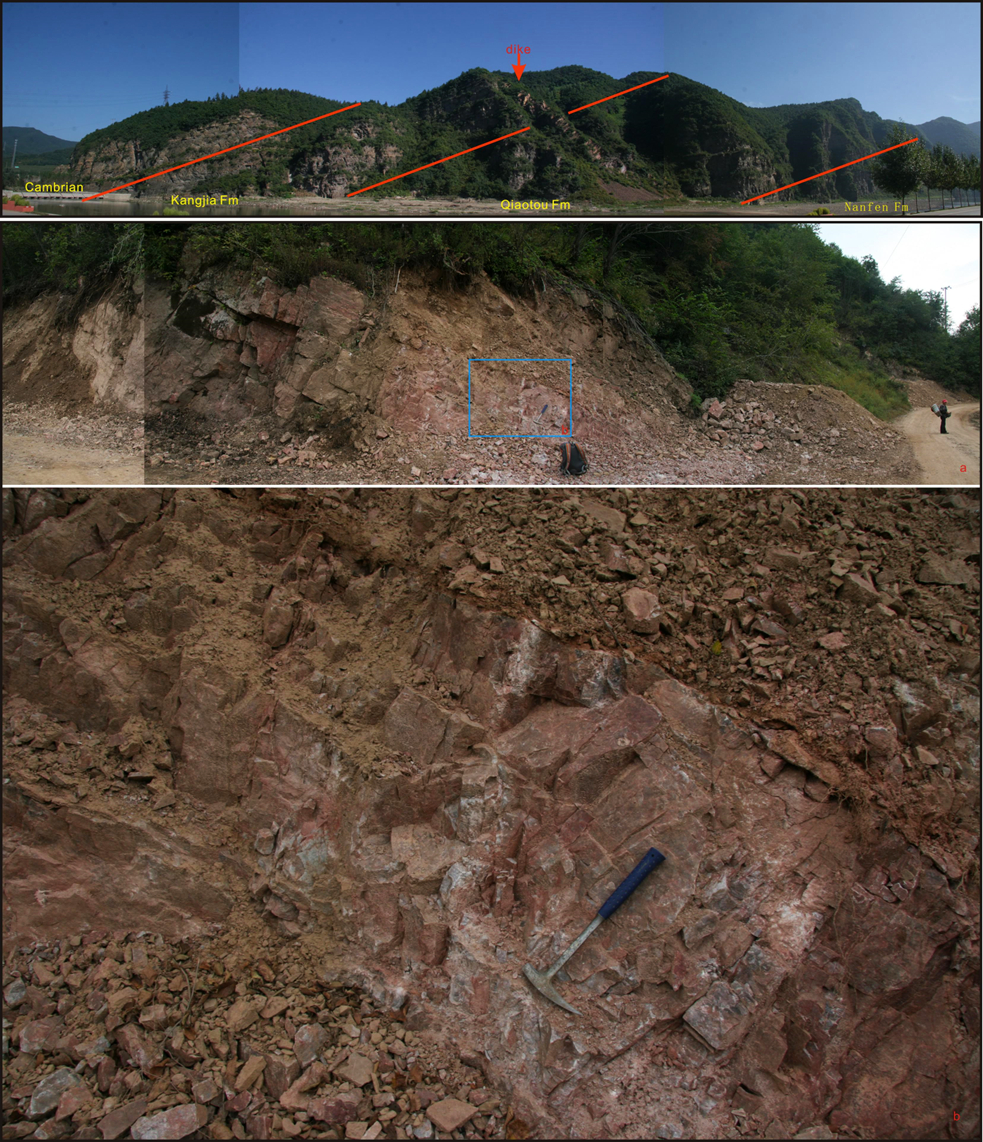Qiaotou Fm
Type Locality and Naming
The name Qiaotou Fm is derived from the Qiaotou Quartzite named by Aoji. O. in 1928. The typical section is situated in Qiaotou of Qiaotou Town 12 km south of Benxi City, and the reference section is in Lidian to Lujuanzi in Wafangdian City, Liaoning Province.
[Figure: Type section of Qiaotou Fm]
Synonym: (桥头组)
Lithology and Thickness
The Qiaotou Fm is dominated by white gray and gray medium- to thick-bedded fine quartzite and glauconite quartzose sandstone interbedded with black and greenish yellow shale and sandy shale. The Qiaotou Formation has obvious sedimentary structures such as ripple marks, desiccation cracks, wavy bedding, gentle cross-bedding and lenticular bedding. The thickness in the Hunjiang area is 248 to 334 m, in Taizihe area is 34.6 to 172.1 m and in the Luda area is 175 to 1115 m.
[Figure: Stratigraphic Column of the Qiaotou Fm]
Relationships and Distribution
Lower contact
The basal part composed of grit (bears the shale shards derived from the underlying Nanfen Formation) rests disconformably (in Benxi area) or conformably (in Fuzhou and Luda area) on the underlying Nanfen Formation.
Upper contact
Regional extent
Eastern Liaoning Province. This formation is distributed in Hunjiang River basin of south Jilin, in Taizihe River Basin of east Liaoning and Fuzhou-Luda area in Liaodong Peninsula.
GeoJSON
Fossils
It yields microplants: Margominuscula sp., Pseudozonosphaera sinica, polyporata obsoleta, Leiopsophosphaera aff. densa, L. infriata, L. minor, L. aperta, L. pelucida, Trachysphaeridium simplex, T. hyalinum, T. aff. minor, T. aff. chihsienense, T. cultum, T. incrassatum, T. planum, Taeniatum crassum, T. aff. simplex, Synsphaeridium conglutinatum, Zonosphaeridium minutum etc
Age
Depositional setting
Additional Information
The glauconite K-Ar age is 629-656 Ma.
